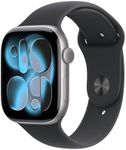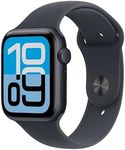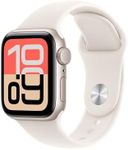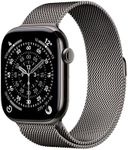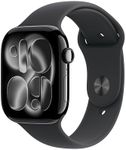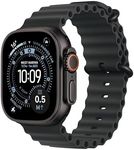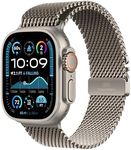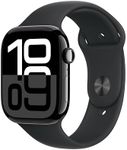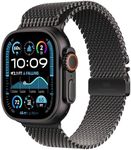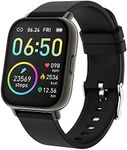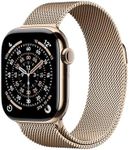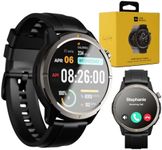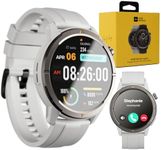Buying Guide for the Best Apple Watches
When choosing an Apple Watch, it's important to consider your lifestyle, health goals, and how you plan to use the device. Apple Watches come with a variety of features and specifications that cater to different needs, so understanding these can help you make an informed decision. Here are some key specifications to consider when selecting the right Apple Watch for you.SizeApple Watches come in different sizes, typically measured in millimeters (mm). The size of the watch affects both the display area and the overall fit on your wrist. Smaller sizes, like 40mm or 41mm, are generally better for people with smaller wrists or those who prefer a more discreet look. Larger sizes, like 44mm or 45mm, offer a bigger display which can be easier to read and interact with, making them ideal for those who prioritize screen real estate or have larger wrists. Consider your wrist size and how you want the watch to look and feel when choosing the size.
Display TypeApple Watches feature different types of displays, such as Retina and Always-On Retina displays. The Retina display is bright and clear, making it easy to read in various lighting conditions. The Always-On Retina display, available in newer models, allows you to see the time and other important information without raising your wrist or tapping the screen. If you want the convenience of always seeing the display, opt for a model with the Always-On feature. Otherwise, a standard Retina display may suffice if you don't mind activating the screen to view information.
Health and Fitness FeaturesApple Watches are equipped with various health and fitness features, including heart rate monitoring, ECG, blood oxygen level measurement, and workout tracking. If you are focused on health and fitness, look for models that offer advanced health monitoring capabilities like ECG and blood oxygen sensors. For general fitness tracking, even the basic models provide comprehensive workout tracking and heart rate monitoring. Consider your health goals and the level of detail you want in your health data when choosing the right features.
ConnectivityApple Watches come with different connectivity options, such as GPS and GPS + Cellular. The GPS-only models rely on your iPhone for connectivity, which means you need to have your phone nearby to use certain features. The GPS + Cellular models, on the other hand, allow you to make calls, send texts, and use data without your iPhone, thanks to their built-in cellular capabilities. If you want the freedom to use your watch independently of your phone, opt for a GPS + Cellular model. If you usually have your phone with you, a GPS-only model may be sufficient.
Battery LifeBattery life is an important consideration, especially if you plan to use your Apple Watch extensively throughout the day. Most Apple Watches offer around 18 hours of battery life, which is typically enough for a full day of use. However, if you use power-intensive features like GPS tracking or cellular connectivity frequently, you may need to charge your watch more often. Consider how you plan to use the watch and whether you need extended battery life for activities like long workouts or overnight sleep tracking.
Material and Band OptionsApple Watches are available in various materials, including aluminum, stainless steel, and titanium, each offering different levels of durability and weight. Aluminum models are lightweight and affordable, making them a good choice for everyday use. Stainless steel models are more durable and have a premium look, while titanium models offer a balance of strength and lightness. Additionally, Apple Watches come with a variety of band options, from sporty silicone to elegant leather and metal bands. Consider your style preferences and how you plan to use the watch when choosing the material and band.
CompatibilityEnsure that the Apple Watch you choose is compatible with your iPhone. Apple Watches require an iPhone to set up and use many of their features. Generally, newer Apple Watch models require an iPhone that runs the latest version of iOS. Check the compatibility requirements of the Apple Watch model you are interested in to make sure it will work seamlessly with your iPhone.
